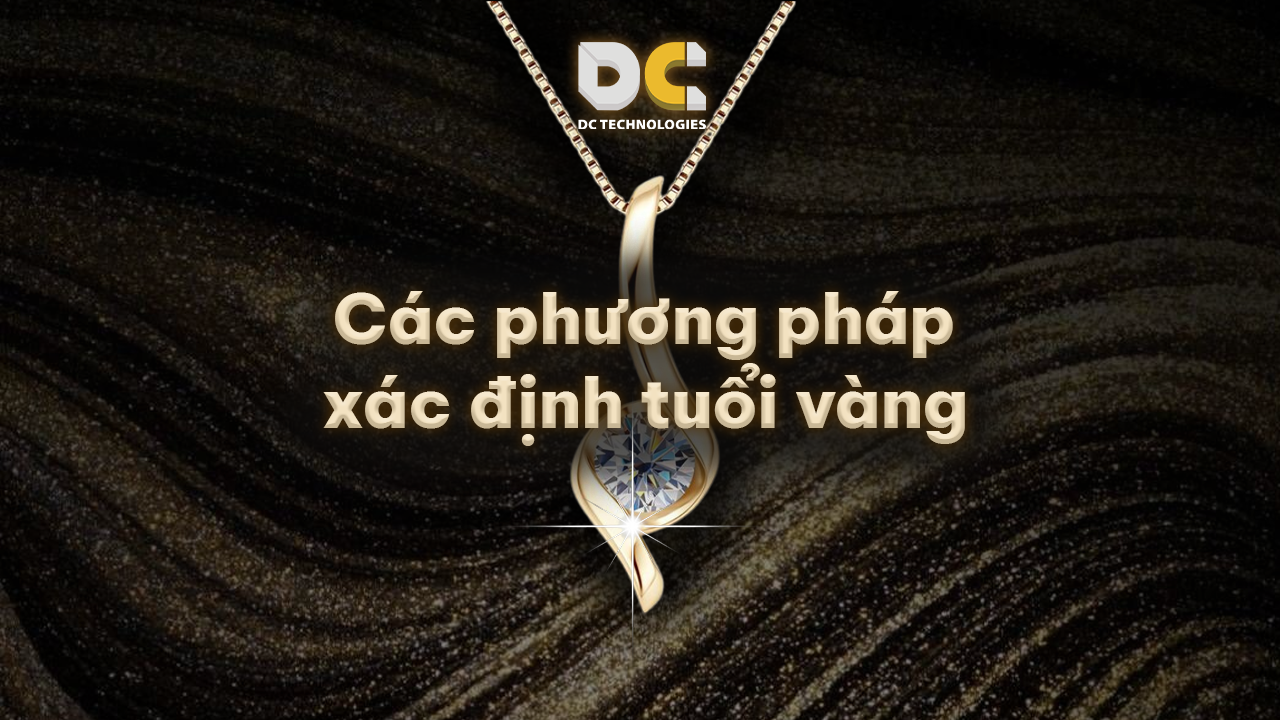News
What is Gold Age? Methods for Determining Gold Age
Gold is a high-end jewelry material that is very familiar to many people. When purchasing gold jewelry, consumers often consider the factor of "gold age." Accurately determining the gold age not only helps consumers choose high-quality products but also avoid purchasing counterfeit or fake items. So, what exactly is gold age, and how can it be accurately determined? Let's explore in detail with DC Tech in the article below.
What is Gold Age?
Gold age is defined as the level of purity of gold, measured on a scale from 1 to 10. Each level on the scale reflects a different percentage of purity, with higher gold age indicating a higher percentage of pure gold in the product.
To make transactions easier, gold age is often converted into karat units. According to standards, 10-year gold is equivalent to 24K, which is the purest form of gold, with a purity of 99.99%.
Formula for calculating gold age:
Gold Age = (Gold Karat) : 24 x 10
Gold Content = (Gold Karat) : 24 x 1000
Below is the table showing the conversion relationship between gold age, karat, and pure gold content:
| Gold age | Karat | Gold Content |
| 10 years | 24K | 99,99 |
| 9 years 17 | 22K | 91,7 |
| 8 years 33 | 20K | 83,3 |
| 7 years 50 | 18K | 75,0 |
| 6 years 67 | 16K | 66,7 |
| 5 years 83 | 14K | 58,3 |
| 5 years | 12K | 50,0 |
| 4 years 16 | 10K | 41,7 |
| 3 years 75 | 9K | 37,5 |

The Importance of Determining Gold Age
Accurately assess the value of the product: Understanding the gold age helps users determine the true value of gold jewelry and avoid purchasing counterfeit or fake items.
Choosing according to needs: Gold age directly affects the properties and durability of jewelry. Pure gold (24K) is softer and more prone to scratches, so it's not typically used for daily-wear jewelry. On the other hand, alloyed gold (such as 18K or 14K gold) is harder, making it the ideal choice for crafting jewelry.
Smart investment: Gold is not only jewelry but also a safe investment with high potential returns. Understanding the gold age allows you to make informed and sensible investment decisions, as gold with a higher age tends to retain its value better over time.

Methods of Determining Gold Age
There are two main methods to determine the age of gold:
Traditional Method: Based on accumulated folk knowledge passed down through generations.
Modern Method: Based on advancements in modern knowledge and science.
Below is a summary table of the methods for determining the age of gold, compiled and analyzed by DC Tech, to provide you with a more detailed understanding of each method:
| Method Name | Minimum Sample Amount | Description | Advantages | Disadvantages | |
Manual Methods | Melting | 250mg | - Place the sample in a furnace at a high temperature (around 1100°C) to remove other metals, leaving only the gold-silver alloy. - Use nitric acid to separate silver from the alloy, obtaining pure gold. - Weigh the amount of gold obtained and compare it with the original sample amount to calculate the gold content. | - Measures only gold - Affected by the presence of Ni and Pd | |
| Stone Grinding | Almost no sample loss | - Gently grind the jewelry on a special stone surface, then drop acid solution on the grinding spot. - Observe the remaining gold color of the grinding mark and compare it with the grinding mark of a reference sample to estimate the gold content of the sample to be measured. | - Measures only gold - Dependent on the experience of the operator. | ||
| Color Recognition | Non-destructive sample | - Use a "reference sample" kit containing various gold leaves with different gold ages to compare with the sample to be analyzed. | -Measures only gold - Dependent on the experience of the operator. | ||
Modern Methods | ICP Plasma Spectrometer | 20mg | - Dissolve the sample in acid and then analyze it using an ICP spectrometer. - To achieve high accuracy, calibration must be done with reference samples of known gold content. - This method also provides information about the content of other elements in the sample. | - Accurate measurement of gold content and other elements in the sample. | - High equipment cost, long processing time, and requires high skill from the operator. |
| X-Ray Fluorescence Spectrometer | Non-destructive sample | - Use an X-ray source machine with a barium-based detector. - Then, scan the X-ray onto the object's surface, and the reflected metallic waves are processed by a computer to calculate the density and frequency of the reflected waves to report the content results | - Fast analysis time (from 30 to 90 seconds depending on the gold sample). - Uses software in Vietnamese. - Can also detect the presence of other elements besides gold. | - X-ray only scans the surface, not deeply. - Must clean off any plating layer before testing. | |
| Electronic Pen | Non-destructive sample | - Based on the principle of capacitance change when the gold age changes. | - Low cost - Easy to use and does not require complex techniques | - Measures only gold - Dependent on measurement conditions. | |
| Niton DXL800 Gold Tester | Non-destructive sample | - Simply place the sample to be analyzed into the machine and start the testing process. | - Results are displayed in seconds on the touch screen. - Multilingual. | - Does not support the Vietnamese language. |
Thus, DC Tech has helped you better understand the concept of gold age and the methods to determine it.
Currently, DC Tech is running a 15% discount promotion for the Niton DXL800 gold tester – a perfect solution for testing and assessing the quality of gold. Contact DC Tech now for detailed consultation and to take advantage of this special offer!

